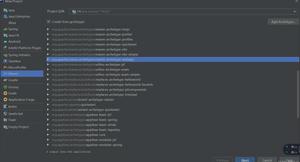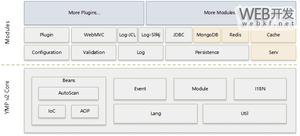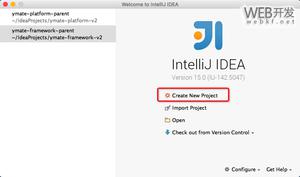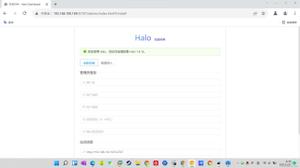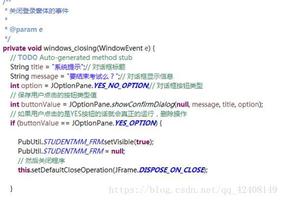(中级篇 NettyNIO编解码开发)第七章-java序列化

相信大多数Java程序员接触到的第一种序列化或者编解码技术就是.Java的默认序列化,只需要序列化的POJO对象实现java.io.Serializable接口,根据实际情况生成序列ID,
这个类就能够通过java.io.Objectlnput和java.io.ObjectOutput序列化和反序列化。
不需要考虑跨语言调用,对序列化的性能也没有苛刻的要求时,Java默认的序列化机制是最明智的选择之一。正因为此,虽然Java序列化机制存在着一些弊病,依然得到了广泛的应用。
本章主要内容包括:
1。NettyJava序列化服务端开发
2。NettyJava序列化客户端开发
3.运行Java序列化应用例程
7.1 NettyJava序列化服务端开发
服务端开发的场景如下:Netty 服务端接收到客户端的用户订购请求消息,消息定义
如表7-1所示。
7-1 NettyJava序列化订购请求POJO类定义
1 package lqy6_serializablePojo_127;2
3 import java.io.Serializable;
4 /**
5 * @author Lilinfeng
6 * @date 2014年2月23日
7 * @version 1.0
8 */
9 public class SubscribeReq implements Serializable {
10
11 /**
12 * 默认的序列号ID
13 */
14 private static final long serialVersionUID = 1L;
15
16 private int subReqID;
17
18 private String userName;
19
20 private String productName;
21
22 private String phoneNumber;
23
24 private String address;
25
26 /**
27 * @return the subReqID
28 */
29 public final int getSubReqID() {
30 return subReqID;
31 }
32
33 /**
34 * @param subReqID
35 * the subReqID to set
36 */
37 public final void setSubReqID(int subReqID) {
38 this.subReqID = subReqID;
39 }
40
41 /**
42 * @return the userName
43 */
44 public final String getUserName() {
45 return userName;
46 }
47
48 /**
49 * @param userName
50 * the userName to set
51 */
52 public final void setUserName(String userName) {
53 this.userName = userName;
54 }
55
56 /**
57 * @return the productName
58 */
59 public final String getProductName() {
60 return productName;
61 }
62
63 /**
64 * @param productName
65 * the productName to set
66 */
67 public final void setProductName(String productName) {
68 this.productName = productName;
69 }
70
71 /**
72 * @return the phoneNumber
73 */
74 public final String getPhoneNumber() {
75 return phoneNumber;
76 }
77
78 /**
79 * @param phoneNumber
80 * the phoneNumber to set
81 */
82 public final void setPhoneNumber(String phoneNumber) {
83 this.phoneNumber = phoneNumber;
84 }
85
86 /**
87 * @return the address
88 */
89 public final String getAddress() {
90 return address;
91 }
92
93 /**
94 * @param address
95 * the address to set
96 */
97 public final void setAddress(String address) {
98 this.address = address;
99 }
100
101 /*
102 * (non-Javadoc)
103 *
104 * @see java.lang.Object#toString()
105 */
106 @Override
107 public String toString() {
108 return "SubscribeReq [subReqID=" + subReqID + ", userName=" + userName
109 + ", productName=" + productName + ", phoneNumber="
110 + phoneNumber + ", address=" + address + "]";
111 }
112 }
SubscribeReq是个普通的JOJO对象,需要强调的有两点。
(1)第9行实现Serializable接口;
(2)第14行自动生成默认的序列化ID;
下面继续看订购应答POJO类。
NettyJava序列化订购应答POJO类定义
package lqy6_serializablePojo_127;import java.io.Serializable;
/**
* @author Lilinfeng
* @date 2014年2月23日
* @version 1.0
*/
public class SubscribeResp implements Serializable {
/**
* 默认序列ID
*/
private static final long serialVersionUID = 1L;
private int subReqID;
private int respCode;
private String desc;
/**
* @return the subReqID
*/
public final int getSubReqID() {
return subReqID;
}
/**
* @param subReqID
* the subReqID to set
*/
public final void setSubReqID(int subReqID) {
this.subReqID = subReqID;
}
/**
* @return the respCode
*/
public final int getRespCode() {
return respCode;
}
/**
* @param respCode
* the respCode to set
*/
public final void setRespCode(int respCode) {
this.respCode = respCode;
}
/**
* @return the desc
*/
public final String getDesc() {
return desc;
}
/**
* @param desc
* the desc to set
*/
public final void setDesc(String desc) {
this.desc = desc;
}
/*
* (non-Javadoc)
*
* @see java.lang.Object#toString()
*/
@Override
public String toString() {
return "SubscribeResp [subReqID=" + subReqID + ", respCode=" + respCode
+ ", desc=" + desc + "]";
}
}
NettyJava序列化订购服务端主函数SubReqServer
1 package lqy6_serializableNetty_127;2
3 import io.netty.bootstrap.ServerBootstrap;
4 import io.netty.channel.ChannelFuture;
5 import io.netty.channel.ChannelInitializer;
6 import io.netty.channel.ChannelOption;
7 import io.netty.channel.EventLoopGroup;
8 import io.netty.channel.nio.NioEventLoopGroup;
9 import io.netty.channel.socket.SocketChannel;
10 import io.netty.channel.socket.nio.NioServerSocketChannel;
11 import io.netty.handler.codec.serialization.ClassResolvers;
12 import io.netty.handler.codec.serialization.ObjectDecoder;
13 import io.netty.handler.codec.serialization.ObjectEncoder;
14 import io.netty.handler.logging.LogLevel;
15 import io.netty.handler.logging.LoggingHandler;
16
17 /**
18 * @author lilinfeng
19 * @date 2014年2月14日
20 * @version 1.0
21 */
22 public class SubReqServer {
23 public void bind(int port) throws Exception {
24 // 配置服务端的NIO线程组
25 EventLoopGroup bossGroup = new NioEventLoopGroup();
26 EventLoopGroup workerGroup = new NioEventLoopGroup();
27 try {
28 ServerBootstrap b = new ServerBootstrap();
29 b.group(bossGroup, workerGroup)
30 .channel(NioServerSocketChannel.class)
31 .option(ChannelOption.SO_BACKLOG, 100)
32 .handler(new LoggingHandler(LogLevel.INFO))
33 .childHandler(new ChannelInitializer<SocketChannel>() {
34 @Override
35 public void initChannel(SocketChannel ch) {
36 ch.pipeline()
37 .addLast(
38 new ObjectDecoder(
39 1024 * 1024,
40 ClassResolvers
41 .weakCachingConcurrentResolver(this .getClass()
42 .getClassLoader())));
43 ch.pipeline().addLast(new ObjectEncoder());
44 ch.pipeline().addLast(new SubReqServerHandler());
45 }
46 });
47
48 // 绑定端口,同步等待成功
49 ChannelFuture f = b.bind(port).sync();
50
51 // 等待服务端监听端口关闭
52 f.channel().closeFuture().sync();
53 } finally {
54 // 优雅退出,释放线程池资源
55 bossGroup.shutdownGracefully();
56 workerGroup.shutdownGracefully();
57 }
58 }
59
60 public static void main(String[] args) throws Exception {
61 int port = 8080;
62 if (args != null && args.length > 0) {
63 try {
64 port = Integer.valueOf(args[0]);
65 } catch (NumberFormatException e) {
66 // 采用默认值
67 }
68 }
69 new SubReqServer().bind(port);
70 }
71 }
从35行开始进行分析。首先创建了一个新的ObjectDecoder,它负责对实现Serializable的POJ0对象进行解码,它有多个构造函数,支持不同的ClassResolver,在此我们使用weakCachingConcurrentResolver创建线程安全的WeakReferenceMap对类加载器进行缓存,它支持多线程并发访问,当虚拟机内存不足时,会释放缓存中的内存,防止内存泄漏。为了防止异常码流和解码错位导致的内存溢出,这里将单个对象最大序列化后的字节数组长度设置为IM,作为例程它已经足够使用。
第43行新增了一个ObjectEncoder,它可以在消息发送的时候自动将实现Serializable的POJO对象进行编码,因此用户无须亲自对对象进行手工序列化,只需要关注自己的业务应辑处理即可,对象序列化和反序列化都由Netty的对象编解码器搞定。
第44行将订购处理SubReqServerHandler添加到ChannelPipeline的尾部用于业务逻辑处理,
下面我们看下SubReqServerHandler是如何实现的。
1 package lqy6_serializableNetty_127;2
3 import io.netty.channel.ChannelHandler.Sharable;
4 import io.netty.channel.ChannelHandlerAdapter;
5 import io.netty.channel.ChannelHandlerContext;
6 import lqy6_serializablePojo_127.SubscribeReq;
7 import lqy6_serializablePojo_127.SubscribeResp;
8
9 /**
10 * @author lilinfeng
11 * @date 2014年2月14日
12 * @version 1.0
13 */
14 @Sharable
15 public class SubReqServerHandler extends ChannelHandlerAdapter {
16
17 @Override
18 public void channelRead(ChannelHandlerContext ctx, Object msg)
19 throws Exception {
20 SubscribeReq req = (SubscribeReq) msg;
21 if ("Lilinfeng".equalsIgnoreCase(req.getUserName())) {
22 System.out.println("Service accept client subscrib req : ["
23 + req.toString() + "]");
24 ctx.writeAndFlush(resp(req.getSubReqID()));
25 }
26 }
27
28 private SubscribeResp resp(int subReqID) {
29 SubscribeResp resp = new SubscribeResp();
30 resp.setSubReqID(subReqID);
31 resp.setRespCode(0);
32 resp.setDesc("Netty book order succeed, 3 days later, sent to the designated address");
33 return resp;
34 }
35
36 @Override
37 public void exceptionCaught(ChannelHandlerContext ctx, Throwable cause) {
38 cause.printStackTrace();
39 ctx.close();// 发生异常,关闭链路
40 }
41 }
经过解码器handlerObjectDecoder的解码,SubReqServerHandler 接收到的请求消息已经被自动解码为SubscribeReq对象,可以直接使用。
第21行对订购者的用户名进行合法性校验,校验通过后打印订购请求消息,构造订购成功应答消息立即发送给客户端。
下面继续进行产品订购客户端的开发
7.2 Java序列化Netty客户端开发
客户端的设计思路如下。
(1)创建客户端的时候将Netty对象解码器和编码器添加到ChannelPipeline;
(2)链路被激活的时候构造订购请求消息发送,为了检验Netty的Java序列化功能是否支持TCP粘包/拆包,客户端一次构造10条订购请求,最后一次性发送给服务端:
(3)客户端订购处理handle将接收到的订购响应消息打印出来。面我们具体看下客户端的代码实现。
客户踹开发例程
7-5 NettyJava序列化产品订购客户端
1 package lqy6_serializableNetty_127;2
3 import io.netty.bootstrap.Bootstrap;
4 import io.netty.channel.ChannelFuture;
5 import io.netty.channel.ChannelInitializer;
6 import io.netty.channel.ChannelOption;
7 import io.netty.channel.EventLoopGroup;
8 import io.netty.channel.nio.NioEventLoopGroup;
9 import io.netty.channel.socket.SocketChannel;
10 import io.netty.channel.socket.nio.NioSocketChannel;
11 import io.netty.handler.codec.serialization.ClassResolvers;
12 import io.netty.handler.codec.serialization.ObjectDecoder;
13 import io.netty.handler.codec.serialization.ObjectEncoder;
14
15 /**
16 * @author lilinfeng
17 * @date 2014年2月14日
18 * @version 1.0
19 */
20 public class SubReqClient {
21 public void connect(int port, String host) throws Exception {
22 // 配置客户端NIO线程组
23 EventLoopGroup group = new NioEventLoopGroup();
24 try {
25 Bootstrap b = new Bootstrap();
26 b.group(group).channel(NioSocketChannel.class)
27 .option(ChannelOption.TCP_NODELAY, true)
28 .handler(new ChannelInitializer<SocketChannel>() {
29 @Override
30 public void initChannel(SocketChannel ch)
31 throws Exception {
32 ch.pipeline().addLast(
33 new ObjectDecoder(1024, ClassResolvers
34 .cacheDisabled(this.getClass() .
35 getClassLoader())));
36 ch.pipeline().addLast(new ObjectEncoder());
37 ch.pipeline().addLast(new SubReqClientHandler());
38 }
39 });
40
41 // 发起异步连接操作
42 ChannelFuture f = b.connect(host, port).sync();
43
44 // 当代客户端链路关闭
45 f.channel().closeFuture().sync();
46 } finally {
47 // 优雅退出,释放NIO线程组
48 group.shutdownGracefully();
49 }
50 }
51
52 /**
53 * @param args
54 * @throws Exception
55 */
56 public static void main(String[] args) throws Exception {
57 int port = 8080;
58 if (args != null && args.length > 0) {
59 try {
60 port = Integer.valueOf(args[0]);
61 } catch (NumberFormatException e) {
62 // 采用默认值
63 }
64 }
65 new SubReqClient().connect(port, "127.0.0.1");
66 }
67 }
第32行,我们禁止对类加载器进行缓存,它在基于OSGi的动态模块化编程中经常使用。由于OSGi的bundle可以进行热部署和热升级,当某个bundle升级后,它对应的类加载器也将一起升级,因此在动态模块化编程过程中,很少对类加载器进行缓存,因为它随时可能会发生变化
下面继续看下SubReqClientHandler的实现。
1 package lqy6_serializableNetty_127;2
3 import io.netty.channel.ChannelHandlerAdapter;
4 import io.netty.channel.ChannelHandlerContext;
5 import lqy6_serializablePojo_127.SubscribeReq;
6
7
8 /**
9 * @author lilinfeng
10 * @date 2014年2月14日
11 * @version 1.0
12 */
13 public class SubReqClientHandler extends ChannelHandlerAdapter {
14 /**
15 * Creates a client-side handler.
16 */
17 public SubReqClientHandler() {
18 }
19
20 @Override
21 public void channelActive(ChannelHandlerContext ctx) {
22 for (int i = 0; i < 10; i++) {
23 ctx.write(subReq(i));
24 }
25 ctx.flush();
26 }
27
28 private SubscribeReq subReq(int i) {
29 SubscribeReq req = new SubscribeReq();
30 req.setAddress("南京市雨花台区软件大道101号华为基地");
31 req.setPhoneNumber("138xxxxxxxxx");
32 req.setProductName("Netty 最佳实践和原理分析");
33 req.setSubReqID(i);
34 req.setUserName("Lilinfeng");
35 return req;
36 }
37
38 @Override
39 public void channelRead(ChannelHandlerContext ctx, Object msg)
40 throws Exception {
41 System.out.println("Receive server response : [" + msg + "]");
42 }
43
44 @Override
45 public void channelReadComplete(ChannelHandlerContext ctx) throws Exception {
46 ctx.flush();
47 }
48
49 @Override
50 public void exceptionCaught(ChannelHandlerContext ctx, Throwable cause) {
51 cause.printStackTrace();
52 ctx.close();
53 }
54 }
第22~25行,在链路激活的时候循环构造10条订购请求消息,最后一次性地发送给服务端。由于对象解码器已经对订购请求应答消息进行了自动解码,此,SubReqClientHandler接收到的消息已经是解码成功后的订购应答消息。
下面的小节将执行我们前面开发的订购请求客户端和服务端,看下执行结果是否符合设计预期。
7.3 运行结果
运行Java例程
首先运行服务端,然后运行客户端,运行结果如下。服务端运行结果如下。
1 Service accept client subscrib req : [SubscribeReq [subReqID=0, userName=Lilinfeng, productName=Netty 最佳实践和原理分析, phoneNumber=138xxxxxxxxx, address=南京市雨花台区软件大道101号华为基地]]2 Service accept client subscrib req : [SubscribeReq [subReqID=1, userName=Lilinfeng, productName=Netty 最佳实践和原理分析, phoneNumber=138xxxxxxxxx, address=南京市雨花台区软件大道101号华为基地]]
3 Service accept client subscrib req : [SubscribeReq [subReqID=2, userName=Lilinfeng, productName=Netty 最佳实践和原理分析, phoneNumber=138xxxxxxxxx, address=南京市雨花台区软件大道101号华为基地]]
4 Service accept client subscrib req : [SubscribeReq [subReqID=3, userName=Lilinfeng, productName=Netty 最佳实践和原理分析, phoneNumber=138xxxxxxxxx, address=南京市雨花台区软件大道101号华为基地]]
5 Service accept client subscrib req : [SubscribeReq [subReqID=4, userName=Lilinfeng, productName=Netty 最佳实践和原理分析, phoneNumber=138xxxxxxxxx, address=南京市雨花台区软件大道101号华为基地]]
6 Service accept client subscrib req : [SubscribeReq [subReqID=5, userName=Lilinfeng, productName=Netty 最佳实践和原理分析, phoneNumber=138xxxxxxxxx, address=南京市雨花台区软件大道101号华为基地]]
7 Service accept client subscrib req : [SubscribeReq [subReqID=6, userName=Lilinfeng, productName=Netty 最佳实践和原理分析, phoneNumber=138xxxxxxxxx, address=南京市雨花台区软件大道101号华为基地]]
8 Service accept client subscrib req : [SubscribeReq [subReqID=7, userName=Lilinfeng, productName=Netty 最佳实践和原理分析, phoneNumber=138xxxxxxxxx, address=南京市雨花台区软件大道101号华为基地]]
9 Service accept client subscrib req : [SubscribeReq [subReqID=8, userName=Lilinfeng, productName=Netty 最佳实践和原理分析, phoneNumber=138xxxxxxxxx, address=南京市雨花台区软件大道101号华为基地]]
10 Service accept client subscrib req : [SubscribeReq [subReqID=9, userName=Lilinfeng, productName=Netty 最佳实践和原理分析, phoneNumber=138xxxxxxxxx, address=南京市雨花台区软件大道101号华为基地]]
尽管客户端一次批量发送了10条订购请求消息,TCP会对请求消息进行粘包和拆包,但是并没有影响最终的运行结果:服务端成功收到了10条订购请求消息,与客户端发淫的一致。
客户端运行结果如下。
1 Receive server response : [SubscribeResp [subReqID=0, respCode=0, desc=Netty book order succeed, 3 days later, sent to the designated address]]2 Receive server response : [SubscribeResp [subReqID=1, respCode=0, desc=Netty book order succeed, 3 days later, sent to the designated address]]
3 Receive server response : [SubscribeResp [subReqID=2, respCode=0, desc=Netty book order succeed, 3 days later, sent to the designated address]]
4 Receive server response : [SubscribeResp [subReqID=3, respCode=0, desc=Netty book order succeed, 3 days later, sent to the designated address]]
5 Receive server response : [SubscribeResp [subReqID=4, respCode=0, desc=Netty book order succeed, 3 days later, sent to the designated address]]
6 Receive server response : [SubscribeResp [subReqID=5, respCode=0, desc=Netty book order succeed, 3 days later, sent to the designated address]]
7 Receive server response : [SubscribeResp [subReqID=6, respCode=0, desc=Netty book order succeed, 3 days later, sent to the designated address]]
8 Receive server response : [SubscribeResp [subReqID=7, respCode=0, desc=Netty book order succeed, 3 days later, sent to the designated address]]
9 Receive server response : [SubscribeResp [subReqID=8, respCode=0, desc=Netty book order succeed, 3 days later, sent to the designated address]]
10 Receive server response : [SubscribeResp [subReqID=9, respCode=0, desc=Netty book order succeed, 3 days later, sent to the designated address]]
客户端接收到了10条订购应答消息,Netty的ObjectEncoder编码器可以自动对订购应答消息进行序列化,然后发送给客户端,客户端的ObjectDecoder对码流进行反序列化,获得订购请求应答消息。
总结
本章介绍了如何利用Netty提供的ObjectEncoder编码器和ObjectDecoder解码器实现对普边POJO对象的序列化。通过订购图书例程,我们学习了服务端和客户端的开发,并且模拟了TCP粘包/拆包场景,对运行结果进行了分析。
通过使用Netty的Java序列化编解码handler,用户通过短短的几行代码,就能完成POJO的序列化和反序列化。在业务处理ba:ndler中,用户只需要将精力聚焦在业务逻辑的实现上F不需要关心底层的编解码细节,这极大地提升了开发效率。
下一章我们继续学习谷歌的Protob时,看在Netty 中如何使用Protob•uf 实现对POJO
对象的自动编解码。
以上是 (中级篇 NettyNIO编解码开发)第七章-java序列化 的全部内容, 来源链接: utcz.com/z/392542.html




